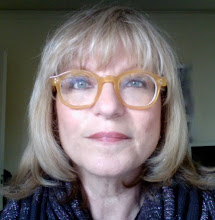
It’s been a busy few days. Cambodia seems to be much more advanced and economically vibrant than Laos. Phnom Penh is bustling and exciting with a post-colonial air we had not felt in Vientiane and Siem Reap has the feel of a boom town, which in many ways it is. There are literally hundreds of hotels there, many of them four and five star properties, and nearly all of them opened within the last 5 years.
Staying at the Raffles Le Royal in Phnom Penh made us feel like characters out of a Graham Greene novel, having drinks at the Elephant Bar and lounging by the pool between outings to the spectacular National Museum and the vast Royal Palace complex. Gene’s friend Marc Gold, who runs the 100 Friends Project, happened to be in Phnom Penh the day we arrived and we met him and his accompanying photographer for dinner. Some years ago Marc decided that in the course of his travels around Asia he would give small amounts of money to needy deserving people he met along the way. That ad hoc project has become a registered charity giving away thousands of dollars each year in small gifts and grants, mostly helping poor people to become self-sufficient. Check it out at 100friendsproject.org. A recent SF Chronicle article is here: http://sfgate.com/cgi-bin/article.cgi?file=/c/a/2006/11/12/INGL2M90FS1.DTL
We went to Cambodia to see the 9th- 12th century Khmer temples at Angkor, but before seeing them felt we had to acknowledge a 20th century event as well, the Khmer Rouge holocaust of their own people under the Pol Pot regime of 1975-1978. It lasted three years, eight months and twenty days, as any surviving Cambodian will tell you. On April 17, 1975 the Khmer Rouge marched into Phnom Penh and began literally to empty the city, forcing everyone into the countryside and killing everyone with any level of education whatsoever, including doctors, lawyers, artists, writers, dancers, teachers, dentists, and anyone who wore eyeglasses. They wanted to take the country back to what they called Year Zero, eliminating any vestige of “bourgeois” thought, including schools, religion, money, individualism of any kind. Two million Cambodians and Vietnamese living in Cambodia were murdered or died of starvation or overwork. Our guide told us that as a five year old child he was required, along with each of the other children in his village, to catch five mice a day. Any day that they were under quota, that number would be added to the next day’s quota. All they had to do was produce the tails; they were allowed to eat the rest.
We visited the killing fields at Choeng Ek, some 16 kilometers outside Phnom Penh, where dozens of mass graves have been exhumed and a huge glass stupa holds hundreds of skulls and long bones. This is only one of many killing fields all over the country. The current king of Cambodia, a devout Buddhist, has been requesting that these remains be cremated, allowing the spirits to be released, but the government has insisted that they remain as tangible evidence for the trial that has not yet, 28 years later, begun. Most of the leaders of the Pol Pot regime, including Pol Pot himself, have died, while others are living comfortably in the country. One is in prison.
The prison they are not in is now a museum in the city. It’s called Tuol Sleng, after the high school that the Khmer Rouge took over and turned into a torture site and interrogation centre where horrible things were done. There are photos and drawings; you don’t want to hear about them. The torturers kept detailed records; they photographed everyone, men, women and children. They kept records. Of the hundreds, perhaps thousands, of people who passed through Tuol Sleng, seven survived.



1 comment:
Shelli and Gene,
Thank you for this incredible blog. It is an education in itself and I feel as though I am there. I am learning so much and look forward to hearing even more when you are back in CA.
Happy New Year!
Lisa
Post a Comment